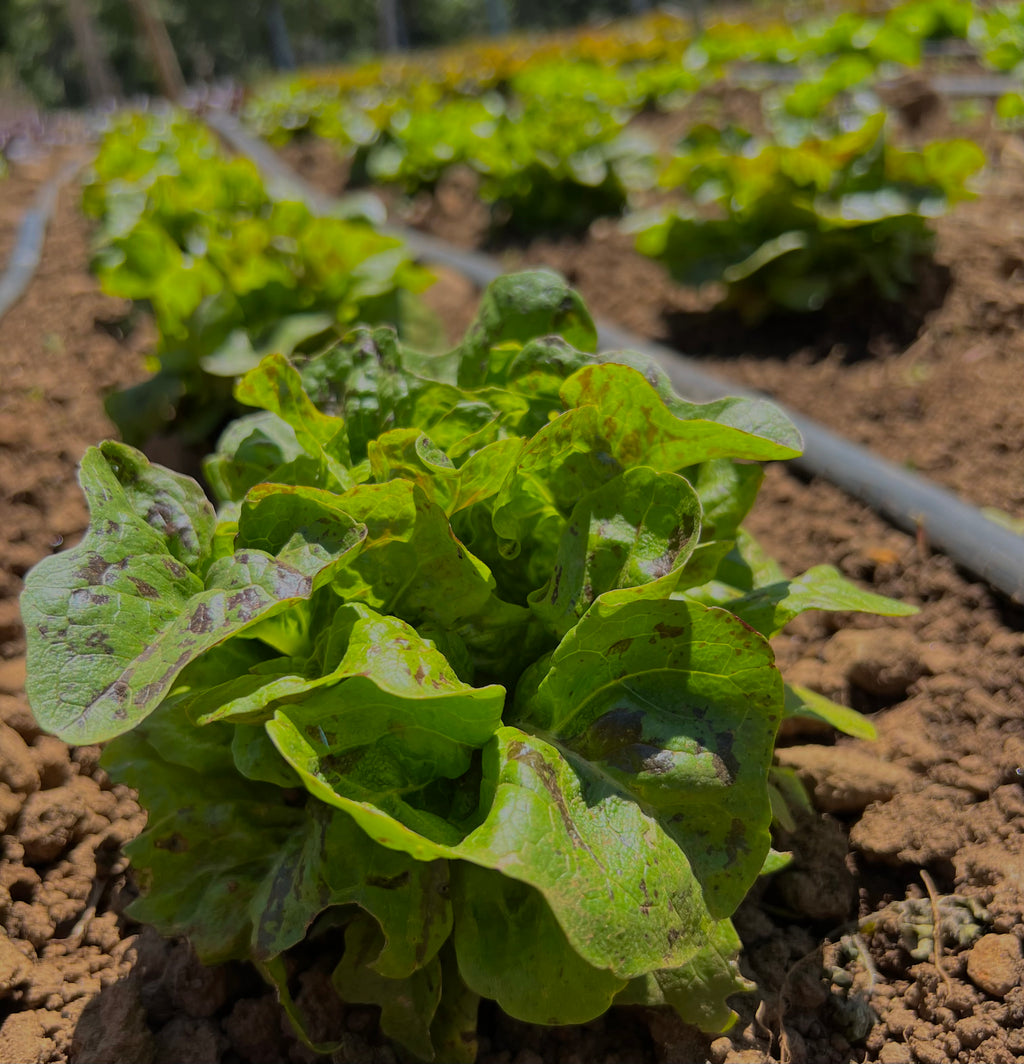Each year we conduct research trials at our home farm in Southern Oregon. Trials are the icing on the cake for seed farmers. It is where we get to play, explore, taste and study the variations in plants.
They allow us to compare different varieties of vegetables and flowers. We look for things related to vigor and health like disease resistant and drought tolerance. We measure size and consistency. Depending on what the trial is for we compare taste, texture and visual appearance as well. Each trial is unique to the plant we are using it to explore.
The information we glean from a trial helps us decide what plants to continue to grow, what varieties we might no longer want to provide for you and even new things we should bring in that are really unique and exciting. It also shows us where we need to do work in terms of our own breeding projects and variety development.
In 2022 we conducted a number of different trials. Today we are going to explore the results of our 2022 Butter Lettuce Trial. I know it seems like it has been awhile but mid spring is such a perfect time to plant butter lettuce so I thought I would share the results with you now. Early to mid spring and late summer are great times to plant butter lettuce because they are more sensitive to summer heat and will bolt more rapidly than other types of lettuce that were bred to withstand the heat. That being said most lettuce prefers to grow in the cooler conditions of spring and fall.
Before I go further you might find yourself wondering what is a true butter lettuce?
Butter lettuce is also referred to as bibb lettuce. It has a very tender texture, the leaves should feel soft and buttery. The taste is generally mild and sweeter than other lettuce types. The heads are shaped like a ball, dense and wrapped tightly somewhat like a cabbage. Butter lettuce makes beautiful salads and is excellent to use as a wrap. It is really delightful. I like to grow a few different types of lettuce at a time, a few romaine, a few butter and a loose leaf. They all will bolt at different times and have really distinct textures and flavors, so it is worth growing all of them. If you are on the fence about lettuce, butter-heads are the best place to start as they are the least bitter.

In our Butter Lettuce Trial we compared 24 different varieties. We bought seeds from other companies and we included the 12 varieties that we grow and sell at Siskiyou Seeds. The metrics that we considered during this trial were: size of head, vigor, disease resistance and head uniformity. We recorded the date that each variety started to bolt as well. Bolting is when the lettuce begins to send a central stalk out, a precursor to flowering and seed production.
We also had a tasting with our staff and some friends on the farm. Each participant filled out a survey. They were asked to rate the flavor, texture, appearance and likelihood they would purchase a variety on a scale of 1-5.
The trial yielded interesting results. A couple varieties were deemed through the trial to not be true butter-heads. A few varieties were unstable and required a lot of roguing.
Roguing is a process that helps lead to uniformity in seed production and to more stable and consistent varieties for open pollinated plants. Before the variety goes to seed we walk through the beds and pull any plants that do not have the right characteristics for that variety. In this case we pulled plants that had bolted, showed signs of disease and did not have the same physical qualities we were looking for.
This can also be a place where new varieties are developed. One of those off types might be really cool. In that case we would isolate those plants and try to pollinate them and save the seed separately. This would be the start of a new breeding project.
Some varieties in the trial we did not like after growing them in comparison. Growing all of the varieties at the same time allows us to truly compare them side by side. Something that does not happen as easily if you just grow one or two varieties. This really highlights the best and worst qualities of a plant.
So who were the winners you might be wondering? We learned a lot through this trial but there were three standouts.
Trial Winners
There was no clear winner due to the way we set up our testing metrics. But these three varieties all achieved the same high results from both our observations and from the taste test portion of the trial. We did make a fun mix from all of our favorite butter lettuce in the trial. Check out our Better Butter Blend .
If trials are interesting to you stay tuned. This year we are conducting trials on carrots, millet and spinach. We will let you know how it goes.
Happy planting!
Taryn Hunter


Nick Michaud
I love it. This is excellent information. Thank you for sharing.